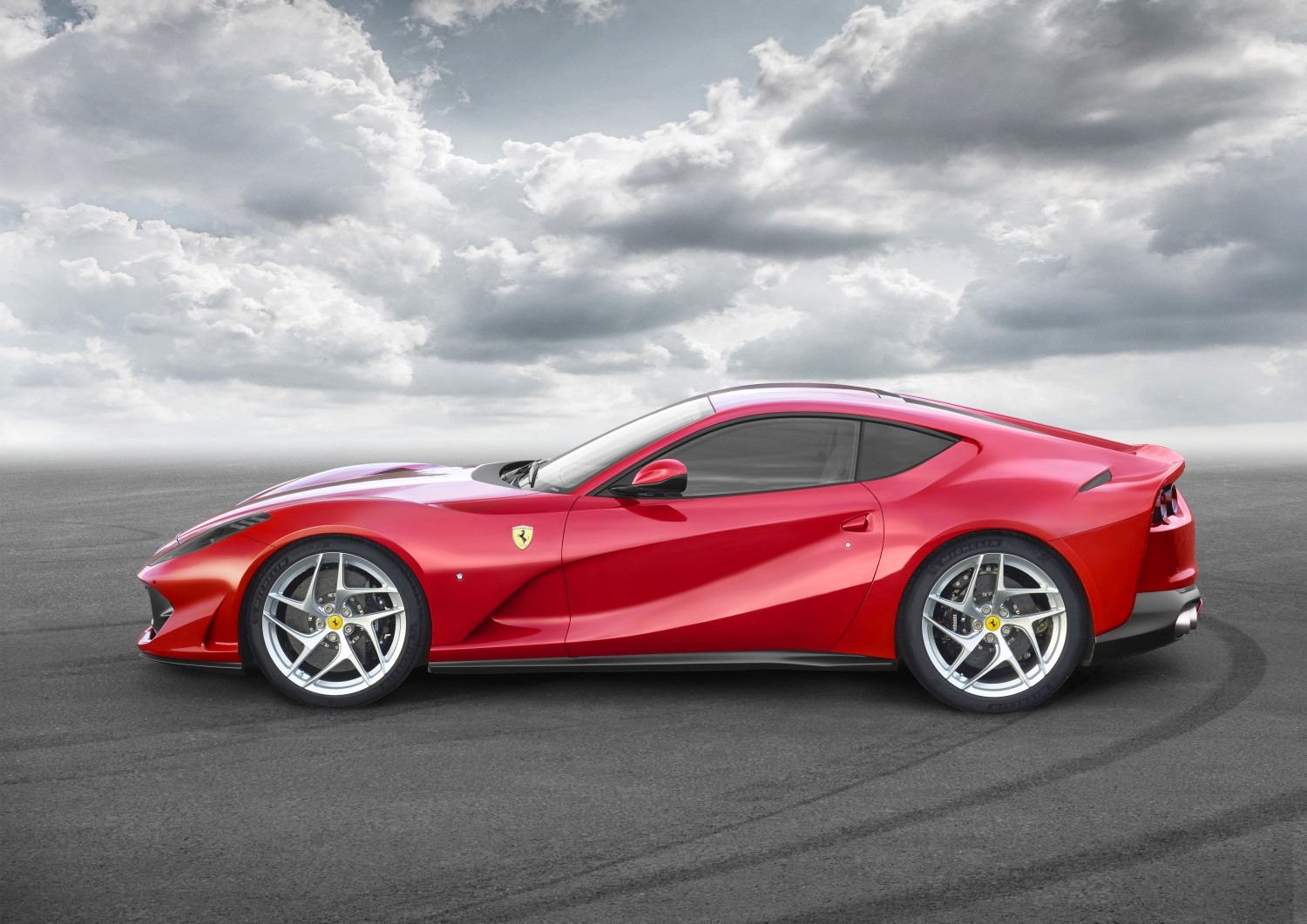Ferrari Profit Jumps 17%
 |
| The Waiting List For Ferrari's Newest 12-Cylinder Car, The 812 Superfast, Already Extends Beyond 2018 |
Italian sports-car maker Ferrari N.V. (NYSE:RACE) said on Nov. 2 that its pre-tax profit rose 17% in the third quarter, to 202 million euros ($235.3 million), on a big jump in sales of its high-profit V-12-powered models.
The strong results led Ferrari to boost its full-year 2017 earnings guidance.
Ferrari earnings:
All financial numbers are in euros. As of Nov. 2, one euro = about $1.16.
| Metric | Q3 2017 | Q3 2016 | Change |
|---|---|---|---|
| Revenue | 836 million | 783 million | 7% |
| Shipments | 2,046 | 1,978 | 3% |
| Earnings before interest and tax (EBIT) | 202 million | 172 million | 17% |
| EBIT margin | 24.2% | 21.9% | 2.3 percentage points |
| Net income | 141 million | 113 million | 24% |
| Industrial free cash flow | 147 million | 178 million | (17%) |
| Net industrial debt | 485 million | 627 million | (142 million) |
How Ferrari makes money
 |
| With Two Races Remaining In The 2017 Season, Ferrari's Formula 1 Racing Team Is Currently Second In The Standings, Behind Mercedes-Benz |
Ferrari has three principal sources of revenue. The majority is generated by the sale of its famous sports cars and spare parts, but it also realizes revenue from the sale of engines to other automakers (notably Maserati) and racing teams, and from sponsorship and other commercial activities related to its Formula 1 racing team, Scuderia Ferrari.
Ferrari has several different car models, but for investors' purposes, they're best thought of in two groups: eight-cylinder models and higher-profit 12-cylinder models.
The story here was a good one for profitability: Ferrari's 3.4% increase in vehicle shipments from the third quarter of 2016 was driven by a big (27%) increase in sales of V-12-powered models.
- The four-seat GTC4Lusso drove much of the jump in 12-cylinder sales, helped by deliveries of the limited-run LaFerrari Aperta supercar. The gain was partially offset by the phasing out of the F12 Berlinetta.
- The waiting list for Ferrari's newest two-seat 12-cylinder model, the 812 Superfast, extends beyond 2018, the company said.
- Sales of V-8-powered models fell slightly year-over-year due to the phase-out of the California T, offset mostly by good sales of the 488 and new GTC4Lusso T models.
- Ferrari's sales rose 5.1% in Europe, 5% in North and South America (combined), and 7.1% in the rest of the world.
- Sales of cars and spare parts generated 605 million euros in revenue in the quarter, 72.4% of Ferrari's total revenue.
- Sales of engines generated 88 million euros in revenue (10.5% of total). That was down 10% from the third quarter of 2016 due to the end of a relationship with a Formula 1 racing team and a decrease in deliveries to Maserati.
- Sponsorship, commercial, and brand activities related to Ferrari's racing team generated 124 million euros in revenue, down slightly from a year ago. The Ferrari team's revenue is down this season because its ranking in the 2016 championship results was lower than its ranking in 2015. That decline was largely offset in the third quarter by increased revenue from its sponsors. (The team has been doing well in 2017.)
- Ferrari's 147 million euros in industrial free cash flow fell from a year ago on higher capital expenditures related to its new models.
- Ferrari ended the quarter with 485 million euros in net industrial debt, down from 653 million euros at the end of 2016, thanks to that strong free cash flow.
Looking ahead: Ferrari raised its full-year guidance
Ferrari increased its earnings guidance for the full year. It now expects to improve on its very good 2016 results as follows:
- Shipments of about 8,400 vehicles. (Unchanged from prior guidance; 2016 result: 8,014.)
- Net revenue of about 3.4 billion euros. (Prior guidance: greater than 3.3 billion euros; 2016 result: 2.85 billion euros.)
- Adjusted earnings before interest, taxes, depreciation, and amortization (EBITDA) of about 1 billion euros. (Prior guidance: greater than 950 million euros; 2016 result: 748 million euros.)
- Net industrial debt to fall below 500 million euros. (Prior guidance: about 500 million euros; as of the end of 2016: 653 million euros.)
Long story short: Ferrari expects its improved margin to boost its full-year profit gain.
